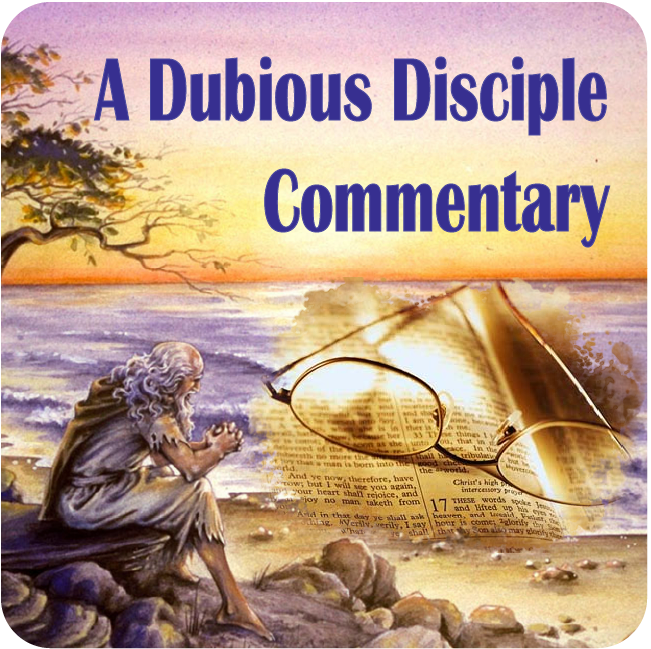Matthew 8:10, The Two Parables of Lazarus, Part II of II
I tell you, many will come from east and west and recline at table with Abraham, Isaac, and Jacob in the kingdom of heaven, while the sons of the kingdom will be thrown into the outer darkness.
//Yesterday, I suggested that Lazarus in John’s Gospel is the same character as the Lazarus of Luke’s Gospel. This has disturbing ramifications for those who read one story or the other literally, instead of as a parable. But there are more reasons to think that they may be linked.
Luke’s Lazarus desires only the scraps from the rich man’s table. The Greek wording echoes the wish of the prodigal son (Luke 15:16) who–like John’s Lazarus–was said to once be dead and yet lives again.
John’s Lazarus is said to be greatly loved by Jesus. John’s Gospel has a mysterious figure throughout known only as “The Beloved Disciple.” Many scholars have speculated that these two figures are the same person: Lazarus is the Beloved Disciple.
Luke’s Lazarus is carried by the angels to the bosom of Abraham. The Beloved Disciple in John’s Gospel rests on the bosom of Jesus. The Greek wording conveys intimacy and feasting in both cases, as feasts were eaten in a reclining position. Lazarus, who has nothing to eat in life, now feasts as he reclines on Abraham’s chest, just as the Beloved Disciple reclines on Jesus’s chest at the Last Supper. Read again, now, Jesus’s promise in today’s verse. The righteous eat at the table with Abraham while the unrighteous Jews are cast into darkness. Does this not describe both Lazarus stories?
So how did these two stories become linked? One possibility: Jesus, in telling parables of the dead and risen, may have often resorted to the descriptive name Lazarus to add meaning, since the name means “God helps.” Two of these “Lazarus” variations made it into the gospels.











 354 Circles
354 Circles
 603 Goodreads Friends & Fans
603 Goodreads Friends & Fans

 Hello! I'm an author, historical Jesus scholar, book reviewer, and liberal Christian, which means I appreciate and attempt to exercise the humanitarian teachings of Jesus without getting hung up on any particular supernatural or religious beliefs.
The Bible is a magnificent book that has inspired and spiritually fed generations for thousands of years, and each new century seems to bring a deeper understanding of life’s purpose. This is true of not only Christianity; through the years, our age-old religions are slowly transforming from superstitious rituals into humanitarian philosophies. In short, we are growing up, and I am thrilled to be riding the wave.
I avidly read all thought-provoking religion titles. New authors: I'd love to read and review your book!
Hello! I'm an author, historical Jesus scholar, book reviewer, and liberal Christian, which means I appreciate and attempt to exercise the humanitarian teachings of Jesus without getting hung up on any particular supernatural or religious beliefs.
The Bible is a magnificent book that has inspired and spiritually fed generations for thousands of years, and each new century seems to bring a deeper understanding of life’s purpose. This is true of not only Christianity; through the years, our age-old religions are slowly transforming from superstitious rituals into humanitarian philosophies. In short, we are growing up, and I am thrilled to be riding the wave.
I avidly read all thought-provoking religion titles. New authors: I'd love to read and review your book!
 Hi! While Lee writes the articles and reviews the books, I edit, organize, and maintain the blog. The views expressed here are Lee's but I'm his biggest supporter! :-)
Hi! While Lee writes the articles and reviews the books, I edit, organize, and maintain the blog. The views expressed here are Lee's but I'm his biggest supporter! :-)
Connect With Me!